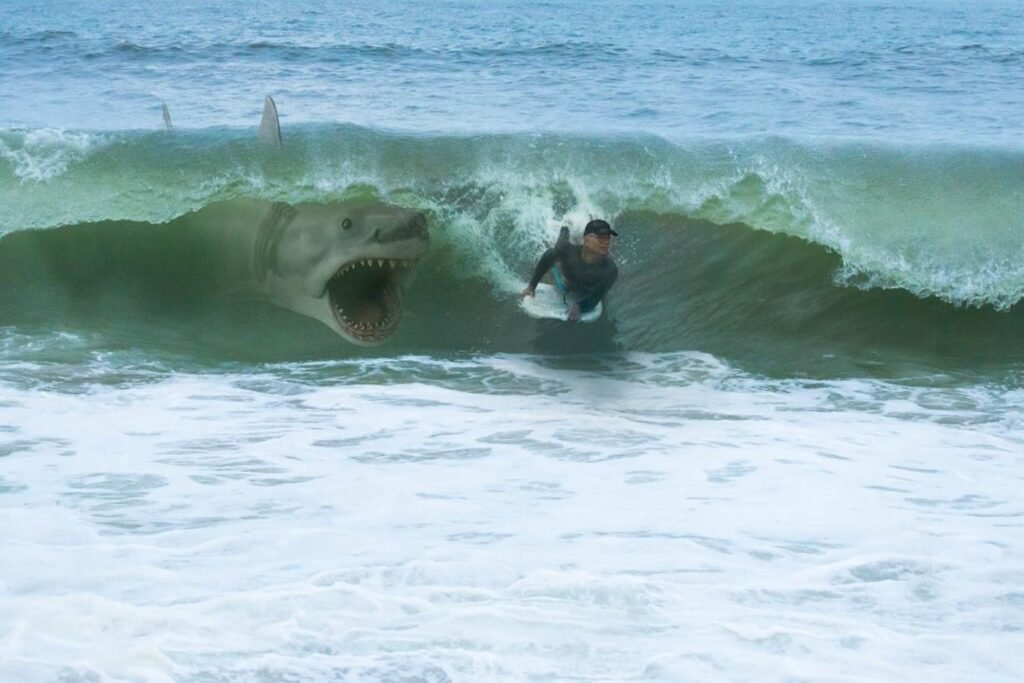In 1975, Jaws revolutionized the horror genre by showing us how utterly terrifying sharks can be. Steven Spielberg’s masterpiece didn’t just scare us; it created a cultural phenomenon that left an indelible mark on the collective psyche. Since then, an array of shark movies have tried to replicate that primal fear—but most were mediocre and quickly forgotten. However, in 2024, Netflix’s Under Paris, a French film directed by Xavier Gens, has emerged to challenge this narrative. Despite receiving a mix of reviews, Under Paris has skyrocketed to the top of Netflix’s most-watched films globally, with viewers touting it as a potential rival to Jaws.
Thalassophobia, as described by psychologists, is an intense fear of large bodies of water—such as oceans, seas and even deep lakes. People who suffer from this phobia often experience a range of symptoms when faced with deep water, including severe anxiety, shortness of breath, rapid heartbeat, sweating, nausea and a feeling of impending doom. The fear factors associated with thalassophobia can vary, but they commonly include the vastness and depth of the water, the potential presence of unseen creatures, the inability to see the bottom, and the fear of drowning. These factors combine to create a powerful sense of vulnerability and helplessness that can be overwhelming for those affected.
Various studies have found that interactions between people and water can lead to feelings of restoration and happiness. The phenomenon, known as the “blue space” effect, refers to predominantly aquatic environments such as rivers, lakes, coastal areas, and oceans. The subsequent concept of the “blue mind” explains why humans are instinctively drawn to the ocean and how being in or near the ocean can fill us with a sense of tranquility, peace, and well-being. However, humans are air-breathing mammals, and a fear of the sea (thalassophobia) can be just as significant as a fear of the dark (nyctophobia) due to the ocean’s vastness, mystery, and potential dangers.
Under Paris follows a familiar premise in shark movies: a team of individuals striving to stop a shark from wreaking havoc. However, it goes a step further by presenting the terrifying idea that a formidable, unknown species of shark can infiltrate our cities. This premise alone upends our sense of safety and familiarity, transforming a bustling urban environment into a setting for primal fear. By setting its scenes in some of the most polluted and unnerving aquatic environments, Under Paris toys with viewers’ expectations of the ocean and deep water. The movie effectively induces thalassophobia by blending ecological crises with primal fears, showcasing environments in their worst possible states, filled with waste, darkness, and chaos.
In each of the three acts of Under Paris, the water conditions are abysmal. The Great Pacific garbage patch is unsafe for both humans and sea creatures, mirroring real-world ecological disasters and emphasizing the inherent dangers of polluted and uncharted waters. The second act is a nightmare set in a reservoir unsuitable for a large group of people, tapping into primal fears of being trapped and helpless in a dangerous environment. The third act, set in the Seine, creates an unsettling sense of vulnerability by introducing a shark in a familiar and supposedly safe environment, playing on fears of everyday spaces becoming dangerous. Under Paris effectively leaves viewers questioning whether any body of water can ever truly be safe, making the fear of the darkness, vastness, and unknown, unseen dangers beneath the surface palpable and relatable.

